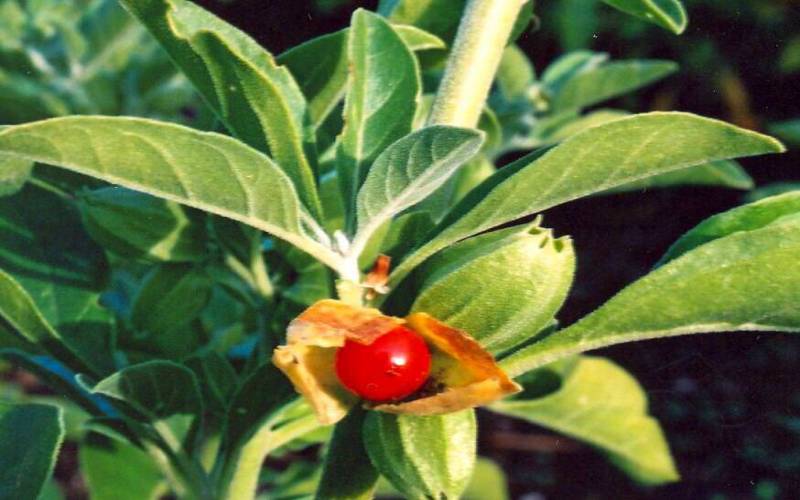Ashwagandha, India
The term Ashwagandha is made up of two words: Ashwa, which means horse, and Gandha, which means smell. The plant's root has a horse-like odour. As a result, the plant is given the name Ashwagandha. Indian Ginseng is another name for it. Winter Cherry is the English name for Ashwagandha. Asgandh is the Hindi name for it. It's a little white flowering perennial plant. When young, the fruits (berries) are orange in colour, turning red when ripe and containing yellow seeds. The plant reaches a maximum height of 35-75 cm. The primary stem is surrounded by branches.
The plant is grown in arid areas like Punjab, Gujarat, Madhya Pradesh's Mandsaur district, Sind, and Rajasthan. Nepal, Pakistan, Bangladesh, Sri Lanka, Afghanistan, South Africa, Egypt, Morocco, Congo, and Jordan are among the countries that grow it. Ashwagandha is a simple herb to use. The Ashwalayan Grihya Sutra and Shuthpath Brahman both mention Ashwagandha's use. The roots, leaves, and fruits of Ashwagandha have been used for medicinal purposes for about 5000 years.
Ashwagandha is renowned as the "prince of herbs" in Ayurveda because of its extensive range of therapeutic applications. It is one of the most commonly used herbs in Ayurvedic therapeutic formulations. Ashwagandha is a revitalising tonic known as "Rasayana." Horses are thought to benefit from Ashwagandha's energy and strength. Ayurvedic formulations include the root, berry, or fruit.


